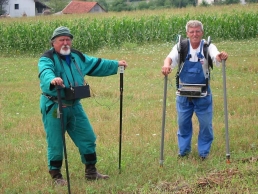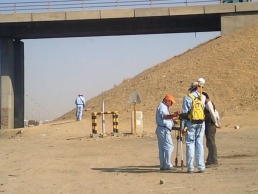Services

stray current survey



Where the presence of stray electric currents is suspected, e.g. in proximity to d.c. electric traction systems or where varying structure/electrolyte potentials indicate the possibility of such currents, it is sometimes necessary to determine more accurately the extent of stray current effect on the structure. This can be done by plotting the potential field in the area, using a stationary reference electrode, or a structure, as a reference point. The effect due to the operation of an electric traction system can be found by making a potential survey during the time the system is working and repeating the tests after the system has been shut down.

The survey is used to determine the level of cathodic protection throughout the entire lenght of a pipeline. It may also indicate areas affected by interaction and coating defects.
The pipe/soil potential is measured at close intervals using a high-resistance voltmeter, half cell and trailing cable connected to the pipeline at the test post.
The exact place of coating defects are marked with GPS technique

When DC is applied to a pipeline in the same way as Cathodic Protection the current flow throught the soil to steel exposed at coating faults generates a voltage gradient in the resistive soil.
The exact place of coating defects are marked with GPS technique.